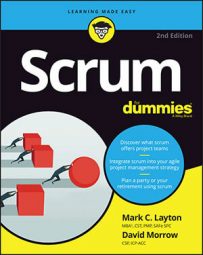-
Project planning: The initial planning for your project. Project planning includes creating a product vision statement and a product roadmap, and can take place in as little time as one day. Project planning is a common agile practice but is not a scrum activity.
-
Release planning: Planning the next set of product features to release and identifying an imminent product launch date around which the team can mobilize. On agile projects, you plan one release at a time. Although release planning is referred to in scrum, it is a common agile practice, not an official scrum activity.
-
Sprint: A short cycle of development in which the team creates potentially shippable product functionality. Sprints, sometimes called iterations, typically last between one and four weeks. Sprints can last as little as one day but should not be longer than four weeks. Sprint length can change during the project, but velocity will be impacted by the duration change.
-
Sprint planning: A meeting at the beginning of each sprint where the scrum team commits to a sprint goal. They also identify the requirements that support this goal and will be part of the sprint, and the individual tasks it will take to complete each requirement.
-
Daily scrum: A 15-minute meeting held each day in a sprint. Here development team members coordinate on the priorities of the day, stating what they completed the day before, what they will focus on the current day, and whether they have any roadblocks.
-
Sprint review: A meeting at the end of each sprint, introduced by the product owner, where the development team demonstrates the working product functionality it completed during the sprint.
-
Sprint retrospective: A meeting at the end of each sprint, where the scrum team discusses what went well, what could change, and how to make any changes.

